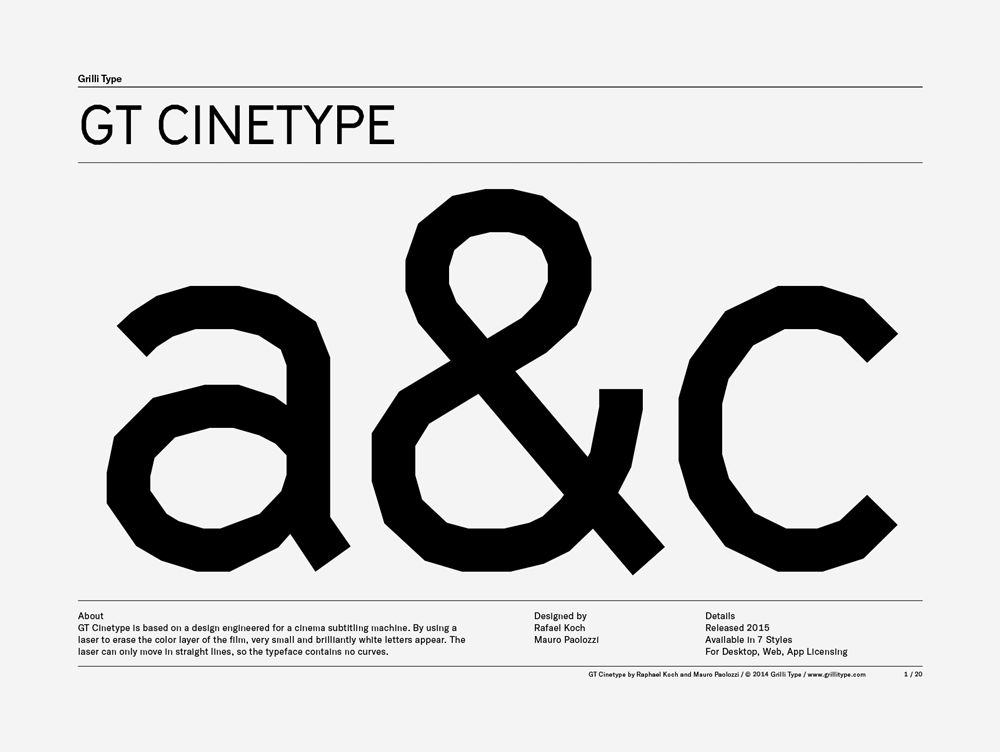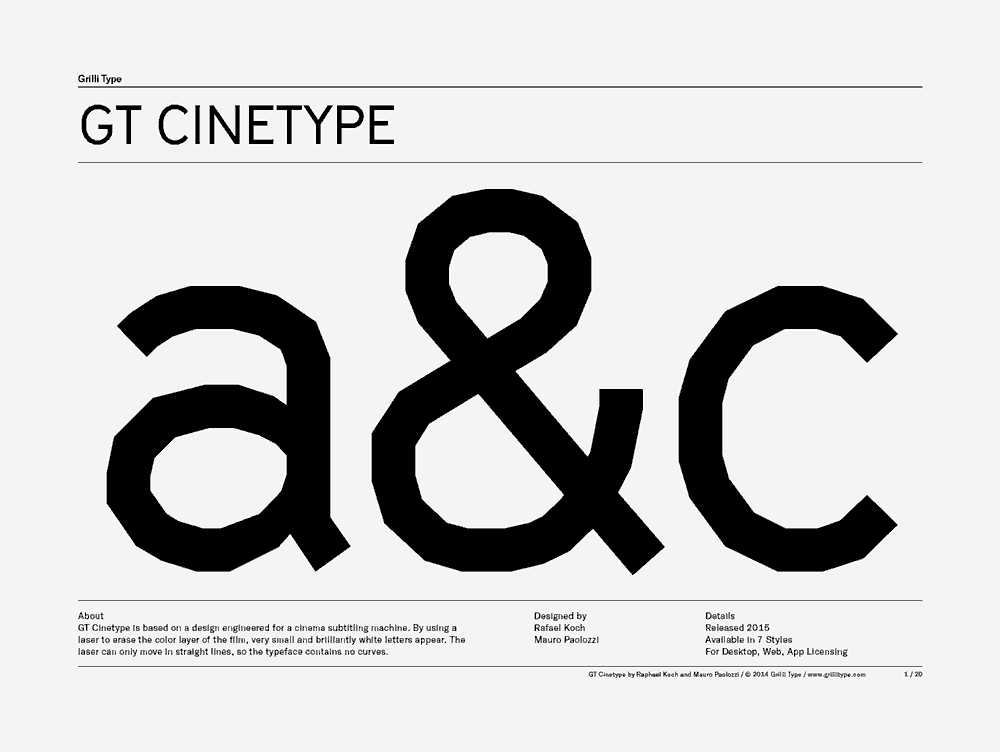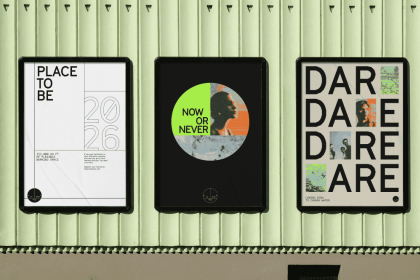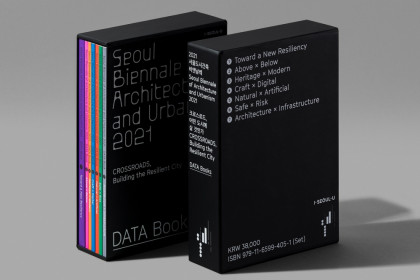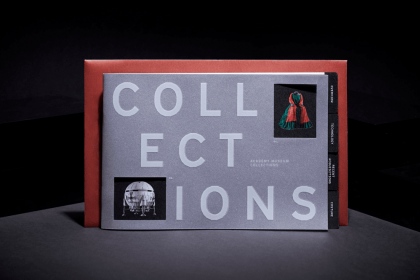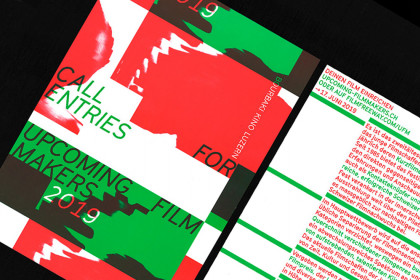GT Cinetype
Family overview
- Light Italic
- Regular Italic
- Bold Italic
- Mono
- LightWrath of Khan 1982 by Nicholas Meyer with William Shatner, Leonard Nimoy, DeForest Kelley
- Light ItalicThis Is Spinal Tap 1984 by Rob Reiner with Rob Reiner, Michael McKean, Christopher Guest
- RegularThe Shawshank Redemption 1994 by Frank Darabont with Tim Robbins, Morgan Freeman, Bob Gunton
- Regular ItalicTexas Chainsaw Massacre 1974 by Tobe Hooper with Marilyn Burns, Edwin Neal, Allen Danziger
- BoldThere Will Be Blood 2007 by Paul Thomas Anderson with Daniel Day-Lewis, Paul Dano, Ciarán Hinds
- Bold ItalicFull Metal Jacket 1987 by Stanley Kubrick with Matthew Modine, R. Lee Ermey, Vincent D’Onofrio
- MonoEraserhead 1977 by David Lynch with Jack Nance, Charlotte Stewart, Allen Joseph
- Settings
Typeface information
GT Cinetype is based on a design engineered for a cinema subtitling machine. By using a laser to erase the color layer of the film, very small and brilliantly white letters appear. The laser can only move in straight lines, so the typeface contains no curves.
Typeface features
OpenType features enable smart typography. You can use these features in most Desktop applications, on the web, and in your mobile apps. Each typeface contains different features. Below are the most important features included in GT Cinetype’s fonts:
- CASE
- Case sensitive forms
(ROBOCOP)
- ONUM
- Oldstyle figures
10.03.1985
Typeface Minisite
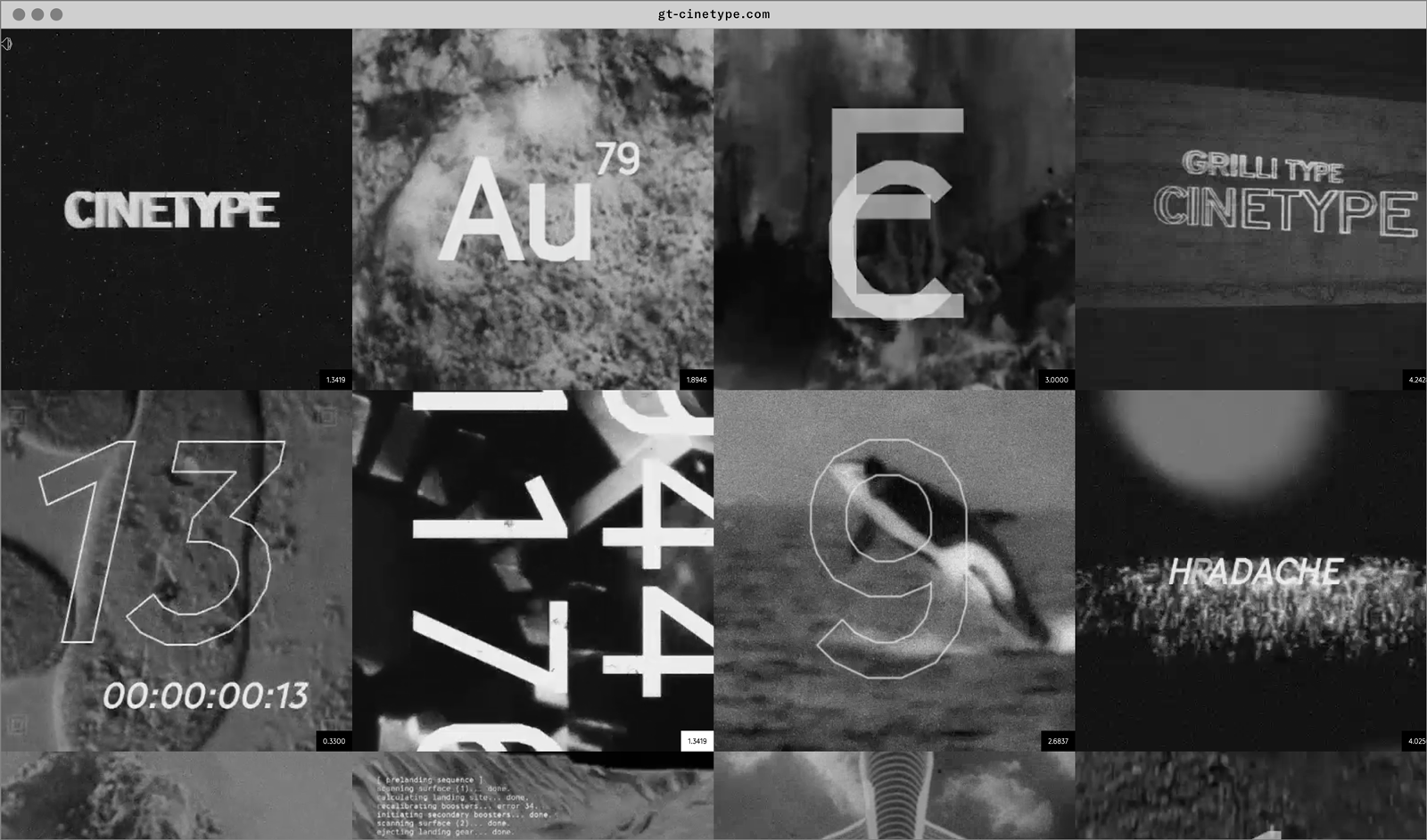
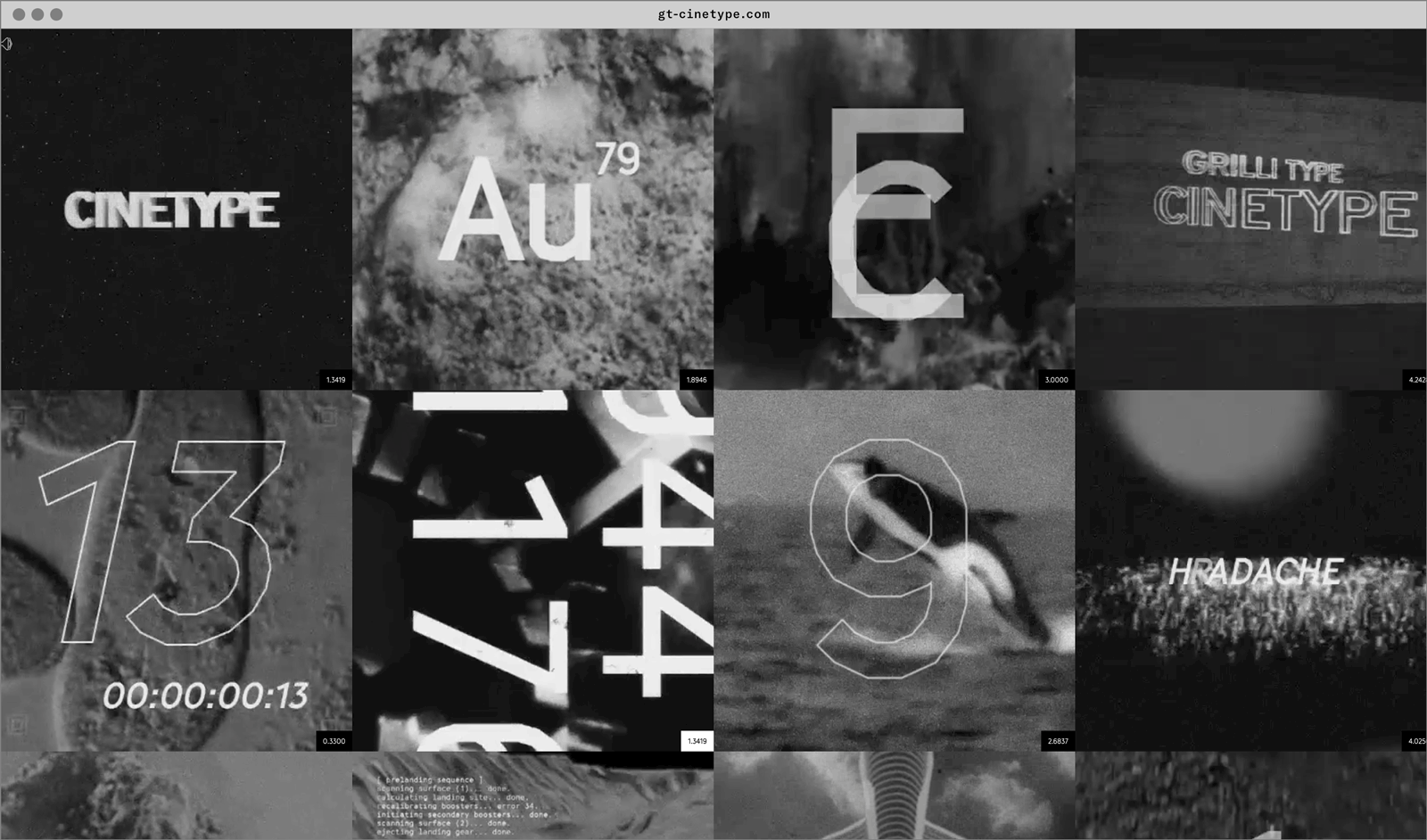
- Visit the GT Cinetype minisite to discover more about the typeface family’s history and design concept.
GT Cinetype in use
